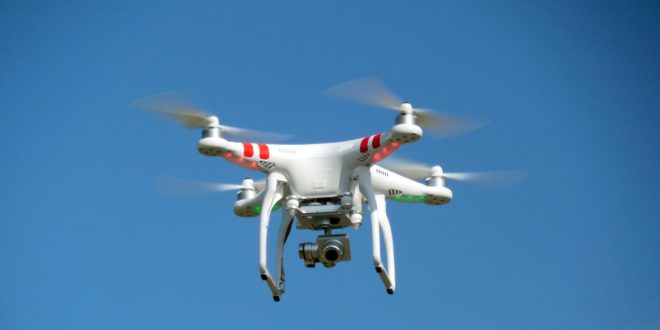The majority of drones are used for good and legitimate purposes. But despite new recommendations for operating drones appropriately to protect individual privacy, some consumers are concerned that drones may be gathering too much information. Homeowners afraid of being harassed may not know what the laws are for dealing with drones. The now infamous “drone slayer” incident is a case in point – a nervous homeowner who felt that a drone might be watching his family shot it down, spurring an ongoing court case with the drone owner.
The FAA is clear: shooting down or disabling a drone is an illegal – and inappropriate – response. But here’s what you can do if you feel that a drone is spying on you.
- Ask the operator. In the vast majority of cases, any drone you see is simply doing its job or taking generic footage. If you can see the operator, ask: but wait until they’re not in the middle of a flight. Commercial operators are required by law to keep their drone in sight and for safety they need to concentrate on their controllers, so they may not respond to you immediately. That drone you see in your neighborhood is probably nothing to do with you, even if flying at low altitude: the camera may very well be focused on the property for sale next door, or the new construction going on down the street. It’s important to understand the legitimate commercial applications of drones that may be taking place in residential neighborhoods: property inspections, roofing assessments, measurements for solar installations, or real estate photos are all good reasons for drones to be flying low in your area. If you don’t see the operator, look carefully: as mentioned above, responsible operators should be keeping their drone in sight. If you can’t find the operator, and the drone is clearly hovering outside of a window or over your property, you may have a legitimate complaint.
- Check the laws in your area, and define your complaint. Assuming that you really are being stalked or spied on by a person using a drone, its important to define your complaint. Any law being broken probably doesn’t relate to drone law: it relates to existing laws prohibiting harassment or peeping toms. (And if you’re a drone operator, you can read about privacy best practices here.) If it’s the noise that bothers you, check to see if your area has noise ordinances. If you feel that images or video are being taken of you or your family without your permission, check the laws about privacy where you are; they may differ based on whether the harassment occurs at your home where you have a reasonable expectation of privacy or in a public place. Very few areas – like Hollywood – have specific ordinances against the use of a drone for the purpose of taking pictures of people’s property. If you simply don’t like the idea of a drone flying over your property, you may be out of luck: the FAA says that the airspace is regulated by federal authority and the homeowner may not restrict aircraft. Do not ever interfere with a drone flying overhead. You not only cause a safety issue when the drone falls (it could land on a pedestrian or car below) but may also find yourself on the wrong side of the law.
- Document. If you have a drone complaint, be sure to document it carefully at the time that it occurs. Record the exact time and date. Get as much information as you can about the make and model drone, and take pictures if you are able to. If you see a number written on the side of the drone, write it down – both recreational and commercial drones are supposed to be registered. Drones have a short battery life and don’t stick around for long- by the time you call the authorities the drone may very well be gone.
- Call the police and (maybe) report to the FAA. As specified above, most complaints of spying or harassment don’t fall under “drone laws” but relate to the normal laws and ordinances that prevent stalking and peeping toms. The appropriate authorities to deal with complaints are the same whether the perpetrator is using a drone or binoculars: the local police force should be called in. The FAA may be called in if it is determined that the drone was being operated illegally or in an unsafe way to deal with those violations; in general, local law enforcement may ask for their collaboration directly when required.
Almost every drone you see in the sky really is just doing its job, or taking aerial images of wide landscapes in which the people are indistinguishable. A drone flying at significant altitude is taking images in a huge scale; that’s what makes them amazing. But if you do see a drone peeking in your window, understand that it’s the operator – not the drone – that’s at fault.
 Unmanned Aerial Vehicle The latest drone news
Unmanned Aerial Vehicle The latest drone news




